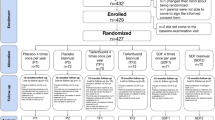Abstract
Design
Randomised control trial in six-year-old children.
Intervention
The control group received dental check-ups twice a year, including professional fluoride gel applications and fissure sealants. The increased professional fluoride application (IPFA) group has the same care as in the control group plus two additional fluoride gel application per year. The non-operative caries treatment and prevention (NOCTP) had individualised recall intervals following the Nexø protocol.1 Data on time and resource use as well as data on effectiveness were collected for three years.
Outcome measure
The primary outcome measure was the incremental cost effectiveness ratio of methods of caries prevention. Other outcomes included societal and health perspective cost effectiveness of the caries prevention methods and overall effectiveness (number of prevented DMFS) of the methods.
Results
Two hundred and thirty children participated in the trial, with a 32% drop out in the NOCTP group, 20% in the IPFA group and 15% in the control group. The resources use and total costs in Euros over three years are shown in the table below.
Conclusions
The NOCTP regimen was more effective and more costly than regular dental care. Based on the limited available amount of evidence regarding the willingness to pay for dental care, the benefits seem to outweigh the additional costs, implying that this is a cost-effective strategy. Increasing the number of professional fluoride applications resulted in a slight reduction of caries increment, but at higher costs than the NOCTP strategy. The results of this study confirm the findings in previous research. Therefore, implementing NOCTP on a larger scale should be considered.
Similar content being viewed by others
Commentary
The impact of oral health inequalities in children can be minimised in later life if tackled early.2 The Steele report stated the importance of using oral health improvements as an outcome for NHS dental care.3 Public Health England has recently suggested in correspondence to NICE that there is a pressing need to build robust economic modelling around future recommended programmes.4
This randomised controlled trial measured the effectiveness of two caries prevention methods and the cost effectiveness of these methods compared to a control. The authors state that the NOCTP group had individualised recall intervals, and OHI, fluoride varnish (FV) and treatment if required. IPFA group was the same as the control but received two extra FV applications (four per year).
It was not noted how the fluoride varnish applications were recorded, therefore it isn't clear if the number of fluoride applications were checked. Presumably if a time and motion type approach was used to record these applications then they actually took place. In reality providing FV within dental practices four times a year may not be realistic. Within Scotland remuneration was introduced in 2011 for General Practitioners to apply fluoride varnish, yet despite being considered best practice, from April 2012 to March 2013 only 20.2% and 22.5 % of three- and four-year-olds respectively had received two or more FV treatments.5
The paper provides considerable detail on the economic modelling, but it would have been useful to advise the reader how the participants were randomised. It is important within any trial comparing interventions that there are similarities; the caries scores at baseline were different between the three groups, and this may have caused some differences in outcomes within the different groups.
It is not stated whether any participants received dental care external to the study, or whether this information had been collected. Although performed in the same clinic, the authors have not mentioned whether the same provider provided treatment in each intervention group, as having different providers within a group might have introduced bias.
The study was based in a clinic in a medium-sized city in the Netherlands. This city may not necessarily be representative of the country as a whole. The Netherlands may differ from the UK; the data for at risk of poverty or social exclusion in 2011 in the UK was 22.7%, and 15.7% in the Netherlands.6 It is difficult to determine how representative this community is, and therefore how relative the study would be to areas within the UK; it would have been useful if the authors had included the demographics of this population within the paper.
The interventions, although more effective than the control, involved more parental time and increased travel costs. This may have a greater implication in more deprived quintiles of a population. Deprivation statistics would have been useful to assess whether this had an effect on the drop-out rates, and whether the population studied was comparable to the UK in terms of socioeconomic status.
As the authors have discussed, there was an overall dropout rate within the study of 22%. The reasons for dropping out were clearly demonstrated in a consort diagram, however the method of obtaining this data was not stated. It would have been useful to know if this information on retention was gathered by questionnaire, or simply anecdotal.The researchers replaced missing values with multiple imputation with similar patients from the same group, with each missing value replaced with predicted values. The authors considered the possibility that there were some differences between the participants who stayed and those who left (with the most engaged participants potentially remaining); If there were differences this could have introduced bias. However the baseline DMFS for those who dropped out compared to baseline for those who stayed in study were similar.
The incremental cost effectiveness ratio was calculated (ICER). The cost effectiveness analysis is complex; however, the process this paper has used is comparable with cost effectiveness studies from other countries.
The researchers have spent a detailed amount of time undertaking a bottom-up micro costing approach, determined per individual patient based on time spent with the specific professional. Unlike some economic analysis the authors used a time and motion approach instead of fixed costing, which is undoubtedly more accurate. The data used to calculate the outcomes were referenced, such as mileage estimates and average waiting times,7 there was also an adjustment for inflation. The paper does not elaborate on Hakkaart-van Roijen's method for cost of travel within this study,8 and other forms of transport are not discussed, such as cycling.
In a European survey 31.2% of Dutch respondents used their bicycle as their main mode of transport. This could introduce potential cost differences if this were performed in the UK where traditionally car and public transport use are more common methods of travel.9
As noted within the paper the use of discounting within economic analysis is contentious.10 This paper resolves these issues by providing both discounted and undiscounted cost outcomes. The authors also discuss the complexity of performing economic analysis over a short-term period – as it is difficult to accurately cost the long term care of a tooth which is restored at an early age.
Despite the fact that a portion of treatment costs within the Netherlands is paid by insurance, this economic analysis still accounts for costs that would be paid for by the NHS. The economic effectiveness could be different within the UK as it is conceivable that Dental Care Professionals could carry out all three programmes, which may lead to cost savings.
The study references dental attendance rates for Dutch children at 95% of five-year-olds and 98% of 11-year-olds attending in the preceding year. In England 69.1% of the population of <18 year olds were seen by a dentist in the preceding 24 month period;11 dental attendance in the UK is potentially less, which could affect the uptake of different caries prevention methods.
Caries is the most common non-communicable disease in children and it is preventable, this prevention should be both evidence-based and cost effective. The study shows that over time the NOTCP strategy was most effective in this limited sample. However the costs both from a healthcare and societal perspective were higher both for the NHS and for patients (when measured in their time). This research would be useful to carry out within the UK using the wider dental team.
Practice points
-
This study reinforces the cost effectiveness of prevention programmes.
-
More research needs to be carried out on cost effectiveness of oral health prevention within the UK.
References
Ekstrand KR . Christiansen MEC: Outcomes of a non-operative caries treatment programme for children and adolescents. Caries Res 2005; 39:455–467.
The Marmot Review Fair Society, Healthy Lives, Strategic review of Health inequalities in England post-2010 [online], available: http://www.instituteofhealthequity.orgprojects/fair-society-healthy-lives-the-marmot-review [03-Jun-2014].
NHS dental services in England: An independent review led by Professor Jimmy Steele (June 2009) [online], available: http://www.sigwales.org/wp-content/uploadsdh_101180.pdf [03-Jun-2014].
National Institute for health and care excellence, Public health draft guideline. Oral health: local authority oral health improvement strategies [online], available: http://www.nice.org.uk/nicemedia/live/13664/67139/67139.pdf [03-Jun-2014].
Information Services Division, Dental Statistics – HEAT Target H9: Fluoride varnishing for 3- and 4-year-olds (Data as at 31st March 2013) [online], available: https://isdscotland.scot.nhs.uk/Health-Topics/Dental-care/Publications/2013-11-26/2013-11-26-FluorideVarnish-Summary.pdf?46570986510 [03-Jun-2014].
Office for National Statistics, Poverty and Social Exclusion in the UK and EU, 2005 2011 [online], available: http://www.ons.gov.uk/ons/dcp171776_295020.pdf [03 Jun-2014].
Nivel/Dutch Consumers Association: Wachten op de (tand) arts [waiting for the dentist]. Consumentengids, February 2002, p 55.
Hakkaart-van Roijen L, Tan SS . Bouwmans C: Manual for cost analysis, methods and fixed costs for economical evaluations in healthcare (in Dutch). College voor Zorgverzekeringen, updated version 2010. Diemen, CVZ, 2011.
European Commission. Future of Transport Analytical Report March 2011 [online], available: http://ec.europa.eu/public_opinion/flash/fl_312_en.pdf [03-Jun-2014].
Vermaire JH, van Loveren C, Brouwer WB, Krol M . Value for money: economic evaluation of two different caries prevention programmes compared with standard care in a randomized controlled trial. Caries Res 2014; 48: 244–253.
Health and social care information Centre: Seven out of ten children in England seen by NHS dentists [online], available: http://www.hscic.gov.uk/article/3445/Seven-outof-10-children-in-England-seen-by-NHS-dentists [03-Jun-2014].
Author information
Authors and Affiliations
Additional information
Address for correspondence: J.H. Vermaire, TNO Life Style – Behavioural and Societal Sciences, Wassenaarseweg 56 NL–2333 AL, Leiden (The Netherlands). E-mail: erik.vermaire@tno.nl
Vermaire JH, van Loveren C, Brouwer WB, Krol M. Value for money: economic evaluation of two different caries prevention programmes compared with standard care in a randomised controlled trial. Caries Res 2014; 48: 244-253 DOI: 10.1159/000356859
Rights and permissions
About this article
Cite this article
Allen, Y., Duane, B. Risk-based caries prevention may be more effective in children. Evid Based Dent 15, 41–42 (2014). https://doi.org/10.1038/sj.ebd.6401021
Published:
Issue Date:
DOI: https://doi.org/10.1038/sj.ebd.6401021



